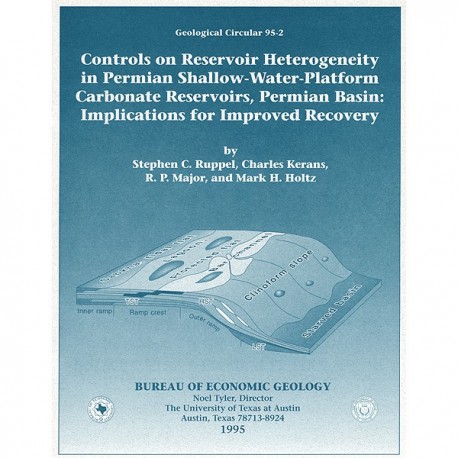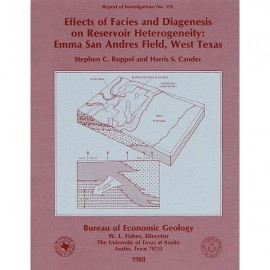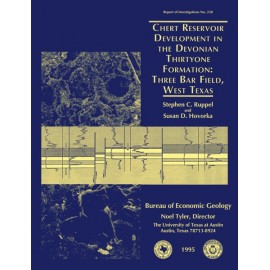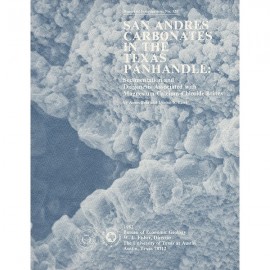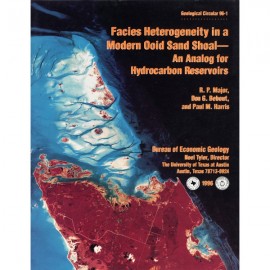Geological Circulars
-
Books & Reports
- Reports of Investigations
- Guidebooks
- Udden Series
- Geological Circulars
- Down To Earth
- Atlases of Major Oil and Gas Reservoirs
- Texas Memorial Museum Publications
- Environmental Geologic Atlas of the Texas Coastal Zone
- Mineral Resource Circulars
- Other Reports
- Seminars and Workshops
- Handbooks
- Submerged Lands of Texas
- Symposia
- Annual Reports
- Open File Reports
-
Maps & Cross Sections
- Thematic Maps
- Miscellaneous Maps, Charts & Sections
- Geologic Atlas of Texas
- STATEMAP Project Maps
- Geologic Quadrangle Maps
- Cross Sections
- Highway Geology Map
- Energy and Mineral Resource Maps
- Shoreline Change and Other Posters
- Wilcox Group, East Texas, Geological / Hydrological Folios
- Bouguer Gravity Atlas of Texas
- River Basin Regional Studies
- Featured Maps
- Posters
- Teachers & the Public
-
Geological Society Publications
- Gulf Coast Association of Geological Societies
- Alabama Geological Society
- Austin Geological Society
- Corpus Christi Geological Society
- Houston Geological Society
- Lafayette Geological Society
- Mississippi Geological Society
- New Orleans Geological Society
- South Texas Geological Society
- GCS SEPM Publications
- Historic BEG & UT Series
Controls on Reservoir Heterogeneity in Permian Shallow-Water-Platform Carbonate Reservoirs, Permian Basin: Implications
GC9502
For a downloadable, digital version: GC9502D.
GC9502. Controls on Reservoir Heterogeneity in Permian Shallow-Water-Platform Carbonate Reservoirs, Permian Basin: Implications for Improved Recovery, by S. C. Ruppel, Charles Kerans, R. P. Major, and M. H. Holtz. 30 p., 25 figs., 1995. ISSN: 0082-3309. Print.
To purchase this publication as a PDF download, please order GC9502D.
ABSTRACT
Shallow-water-platform carbonate reservoirs of Permian age have accounted for more than half of the oil production in the Permian Basin, one of the largest oil-producing regions in the United States. Despite more than 70 yr of production, including advanced primary and secondary development, however, these reservoirs still contain as much as two-thirds of the original oil in place. This low recovery efficiency is linked to an incomplete understanding of the geological and petrophysical heterogeneities of these reservoirs and their controls on fluid flow in the subsurface. Integrated outcrop and subsurface studies of Permian reservoir successions in the Permian Basin illustrate that heterogeneity is the product of the combined effects of original depositional patterns and subsequent diagenesis. The relative contribution of each of these to the development of reservoir porosity and permeability varies systematically across the depositional platform and through the stratigraphic succession in concert with paleotopography, depositional environment, and relative changes in sea level. Accurate modeling and simulation of these reservoirs demand detailed characterization of subtle but significant changes in depositional and diagenetic facies, best accomplished by integrating models of geological and petrophysical architecture by means of synthesizing outcrop and subsurface studies. This report describes the styles and causes of heterogeneity in Permian reservoirs of the Permian Basin and illustrates the importance of integrating investigations when designing optimal strategies for recovering remaining oil resources. Experience in the Permian Basin suggests that maximum recovery of the original oil resource depends on applying these types of studies early in a reservoir's exploitation history and ideally before secondary recovery operations have begun.
Keywords: carbonates, Clear Fork Group, hydrocarbons, improved recovery, Permian, Permian Basin, reservoirs, San Andres Formation, Texas, West Texas
Citation
Ruppel, S. C., Kerans, Charles, Major, R. P., and Holtz, M. H., 1995, Controls on reservoir heterogeneity in Permian shallow-water-platform carbonate reservoirs, Permian Basin: implications for improved recovery: The University of Texas at Austin, Bureau of Economic Geology, Geological Circular 95-2, 30 p.
